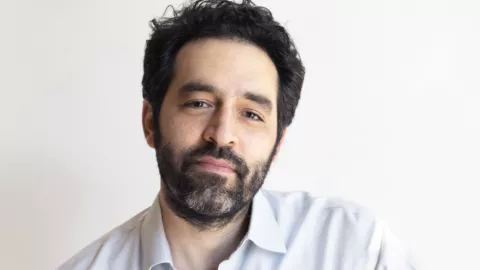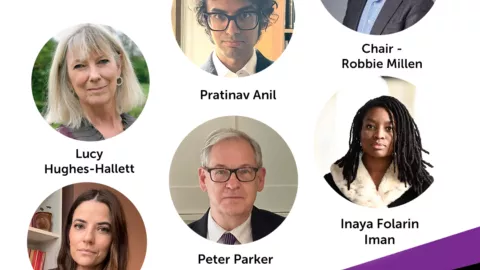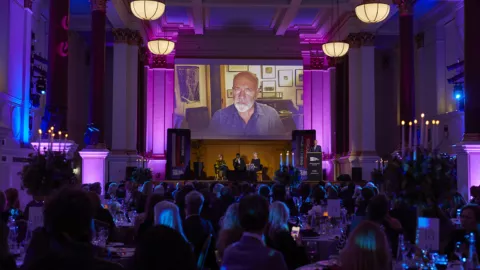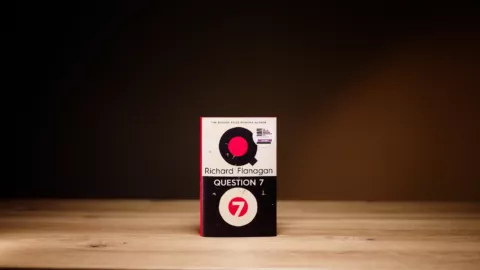
Jonathan Blitzer Longlist Interview
9 October 2024
Cal Flyn, author of ‘Islands of Abandonment: Life in the Post-Human Landscape’, talks about her writing process and how she feels about being longlisted for the Baillie Gifford Prize this year.
How does it feel to be longlisted?
It feels fantastic. It’s a true honour, and I feel immense gratitude to the judges. I’ve always used the Baillie Gifford longlists as a guide to my own reading—and found fantastic titles this way that I would otherwise have missed—so it’s quite surreal to see my own book feature on the list this year.
And of course I feel immense gratitude towards my publishing team at William Collins, who have thrown their weight behind Islands of Abandonment every step of the way.
How did you conduct your research?
Reading, reading, reading, of course. Anything I can get my hands on: tourist brochures, scientific papers, history books, interviews, letters, textbooks, exhibition notes, fiction, poetry... You never know where you’ll find the perfect tidbit. But it’s not enough to be deskbound, I think. It’s important to go to places you are writing about in person.
I do this to allow me to write descriptively about place, but also to allow my understanding of the locations and their pasts to slot more fully into place. I think it’s difficult to understand the full significance of an experience without wide reading, but also vice versa it’s difficult to understand the true reality of facts and figures without truly feeling them, immersing oneself in it, feeling the breeze on your face—or a shiver of fear.
So a lot of my research time was spent on the move, visiting abandoned sites around the country and internationally. Quite a few tentative site visits never made it into the book—perhaps they were wonderfully atmospheric, but I couldn’t find enough background information or scientific study to allow the chapter fit into the broader thesis, or perhaps, when I dug into their stories, they echoed too closely the histories of elsewhere. Sometimes I attempted to visit sites that transpired no longer to exist. No matter. Often that can’t be known in advance—abandoned places are by their nature ephemeral.
Another benefit of going places in person is that there is a certain serendipity at play—in an abandoned botanical garden in Tanzania, where I had specifically gone looking for stories of invasive species, I met two scientists who were there researching the very same. They were great company, and on parting one of them gifted me a pen drive full of PDFs of all the relevant botanical literature. In Paterson, NJ, I met a man smoking drugs in a ruined industrial complex who seemed almost to have been waiting for me to arrive, to tell me his life story. These things can’t be predicted, don’t always happen, but when they do it feels like your project is written in the stars.
Which of the abandoned places did you find the most intriguing?
The place that affected me most unexpectedly was the island of Swona, which is a tiny abandoned island off the north coast of Scotland. I went there looking for a herd of feral cattle, which has survived there since the last inhabitants left in the 1970s. They were my focus, and I had been warned to be cautious around them. What I hadn’t realised, however, was quite how profoundly my period of self-imposed isolation on the island would affect me, psychologically.
I was there for 24 hours. After an initial exploration of the abandoned and ruined houses on the island, I felt my first prickle of unease when I stumbled upon a decomposing carcass of a cow. Soon it seemed there was death everywhere, and I grew jumpy and nauseous, and found it difficult to relax, or even to eat or drink, never mind sleep.
I became increasingly conscious of the oystercatchers who pursued me along the coast, screaming alarm calls every few seconds. I was attacked by arctic terns after inadvertently stumbling into their colony, and then threatened by bonxies (great skuas) when I then wandered too close to theirs. Far from a place emptied of life, it was crammed full of nonhuman beings—birds, seals, rodents, cattle—all of whom seemed utterly affronted by my invasion of their privacy.
Swona made me think a great deal about what we mean when we say a place is ‘abandoned’. As, on the other end of the spectrum, did the urban ruins of Detroit and Paterson, which are often still peopled in some form.
What are you working on next?
I’ve been thinking a great deal about the idea of wilderness and what me might hope to find there. It’s still at a very early stage, but I find the ideas at play very interesting and even provocative. So, fingers crossed, that might turn into something!

10 April 2025

17 December 2024

19 November 2024